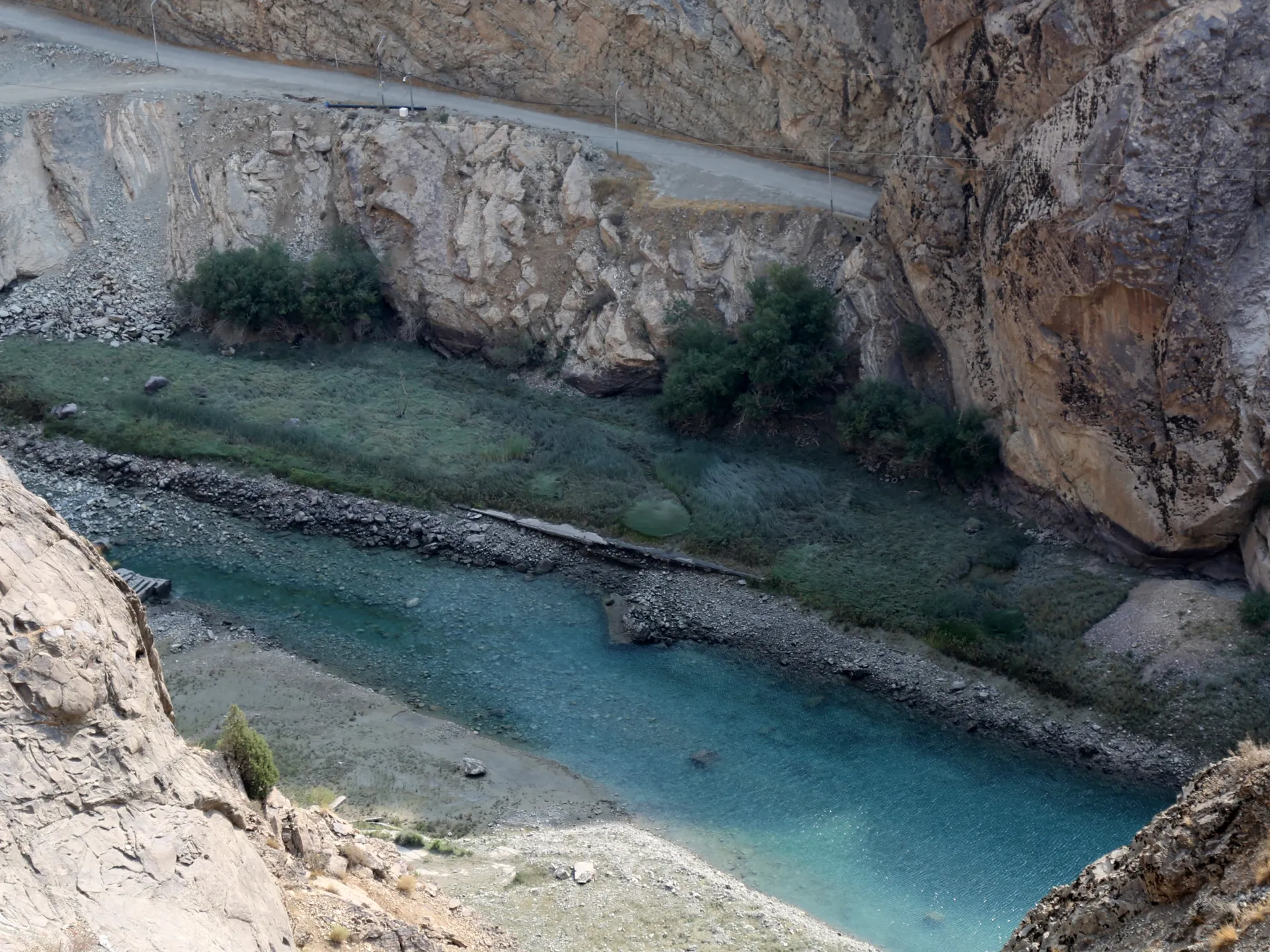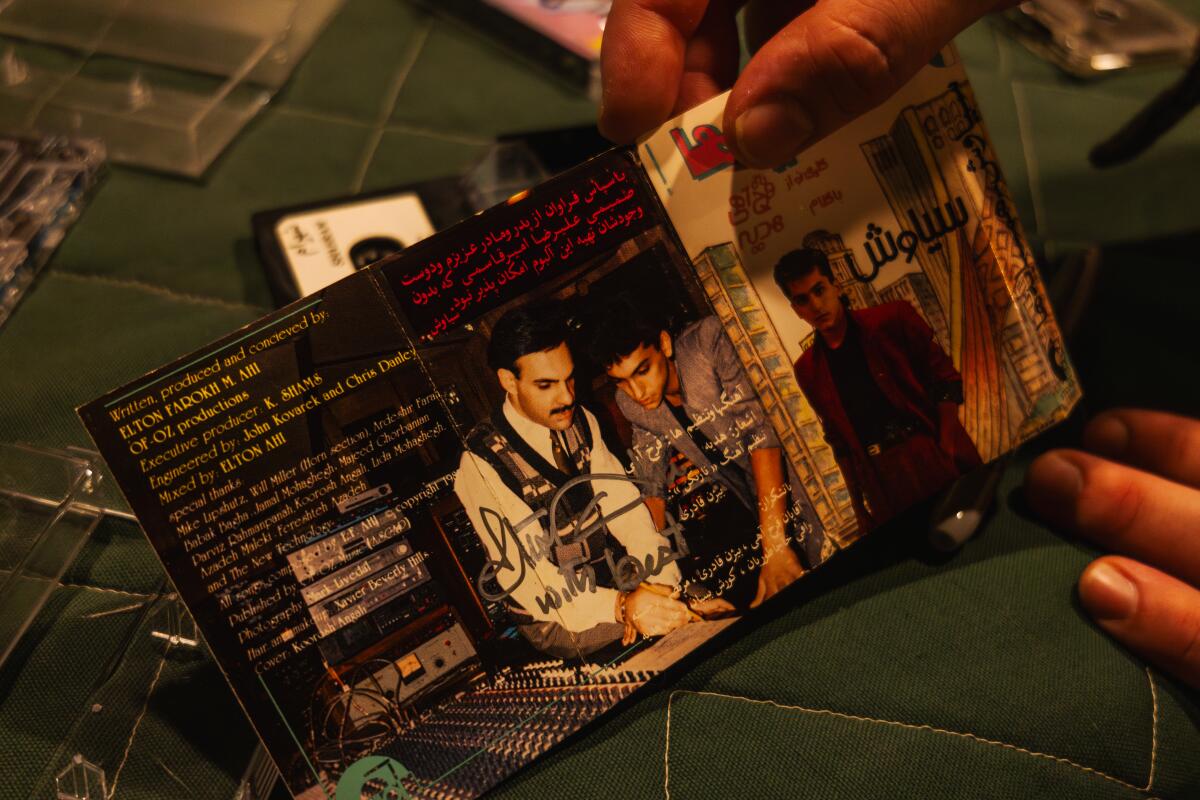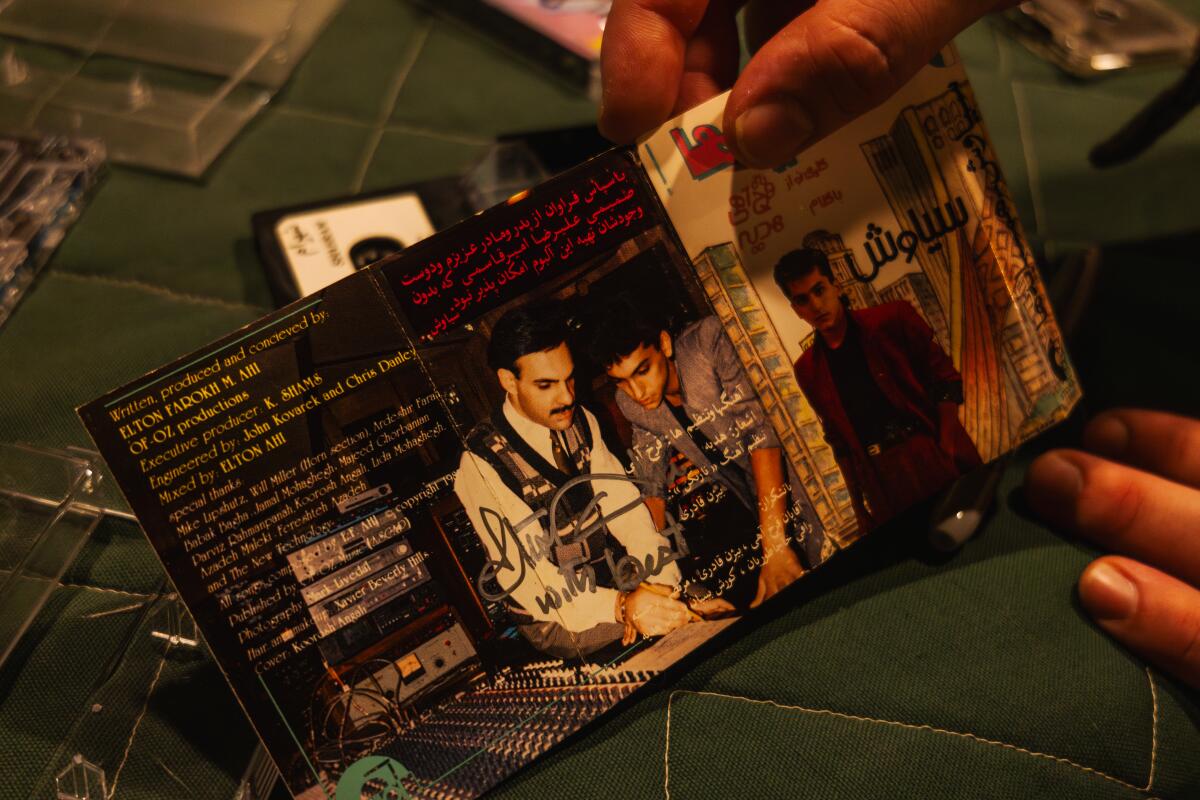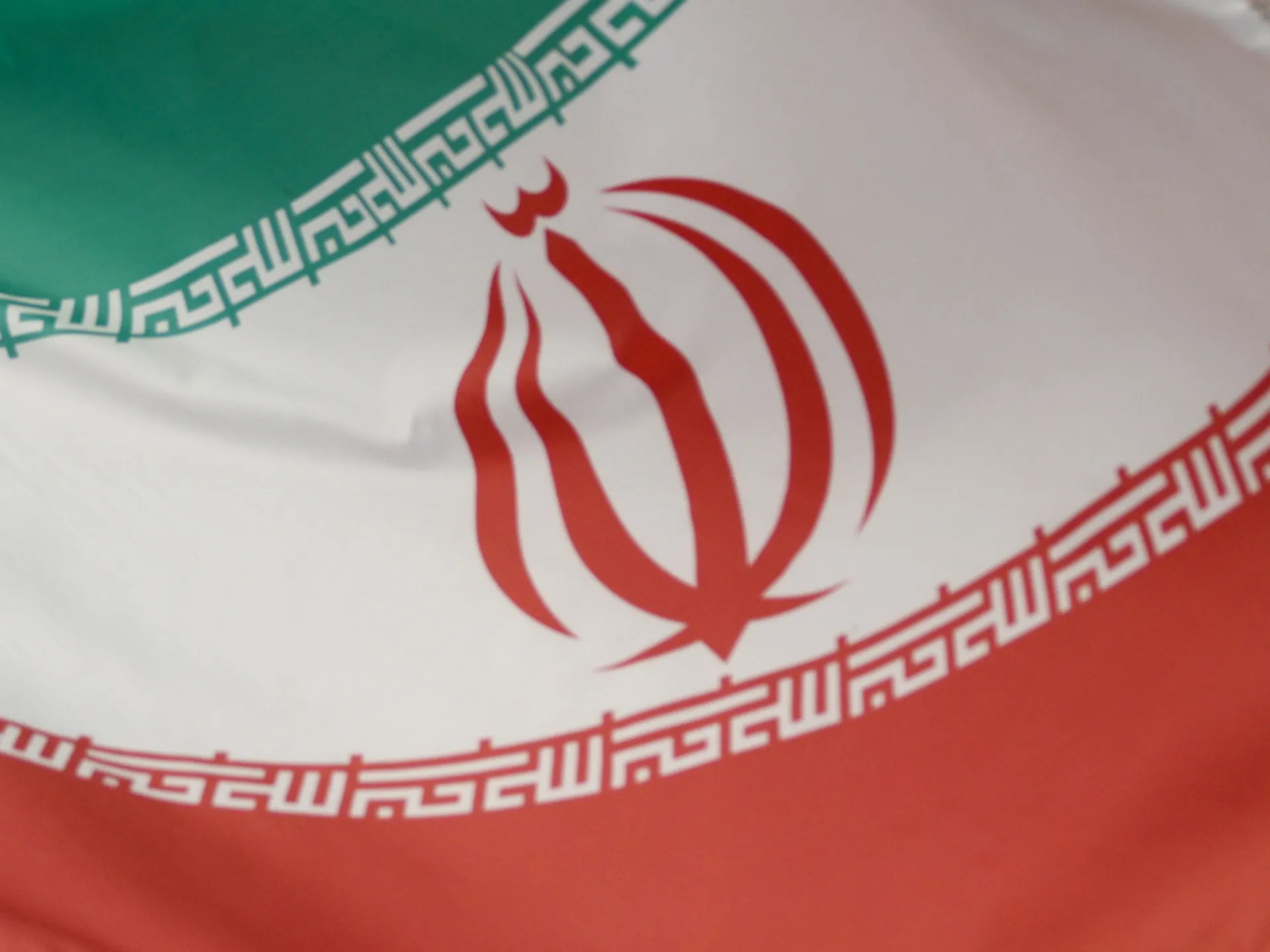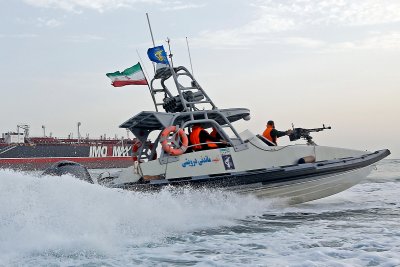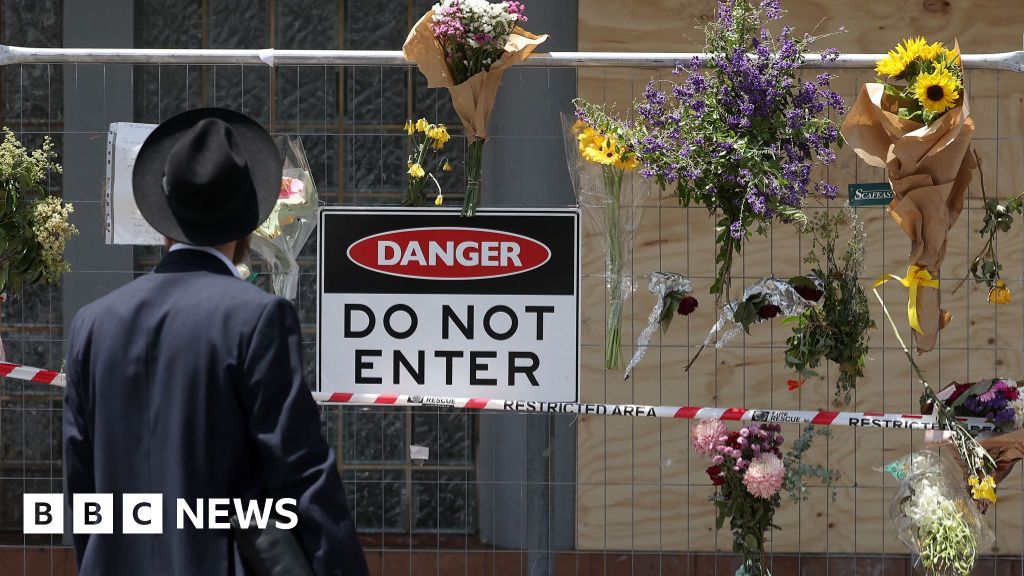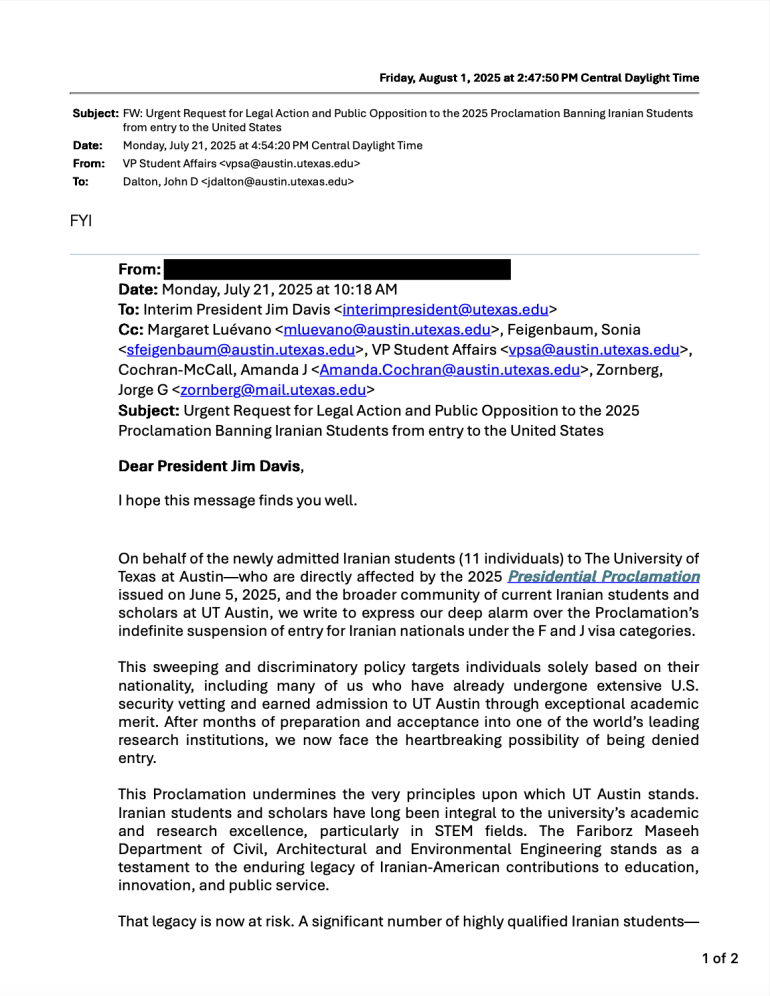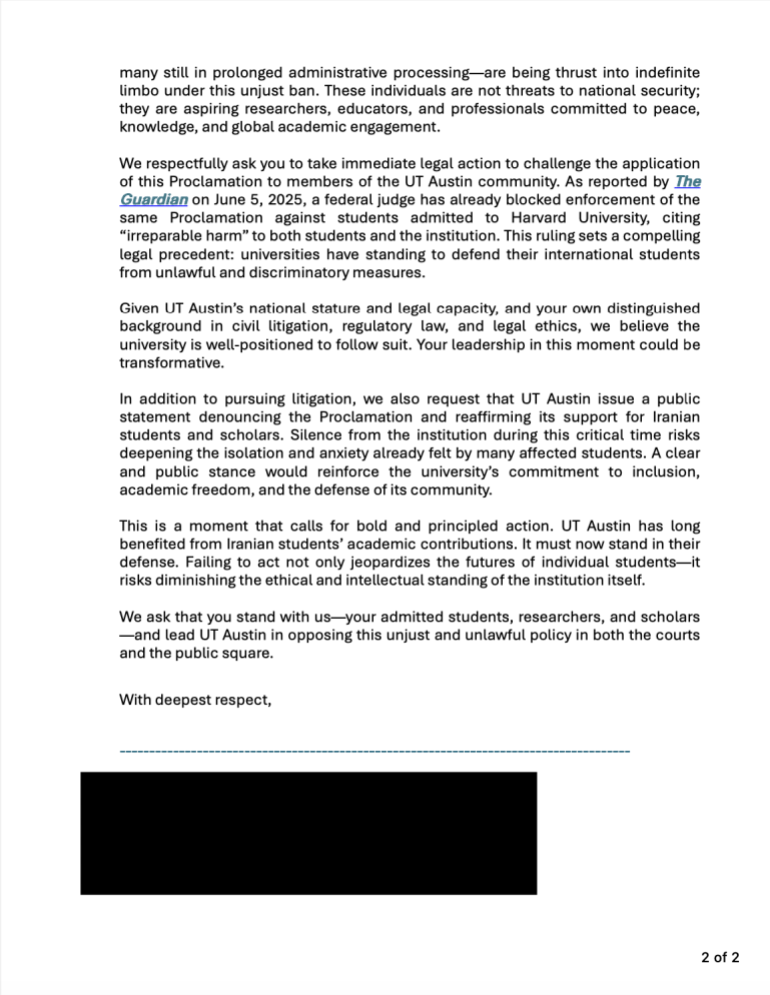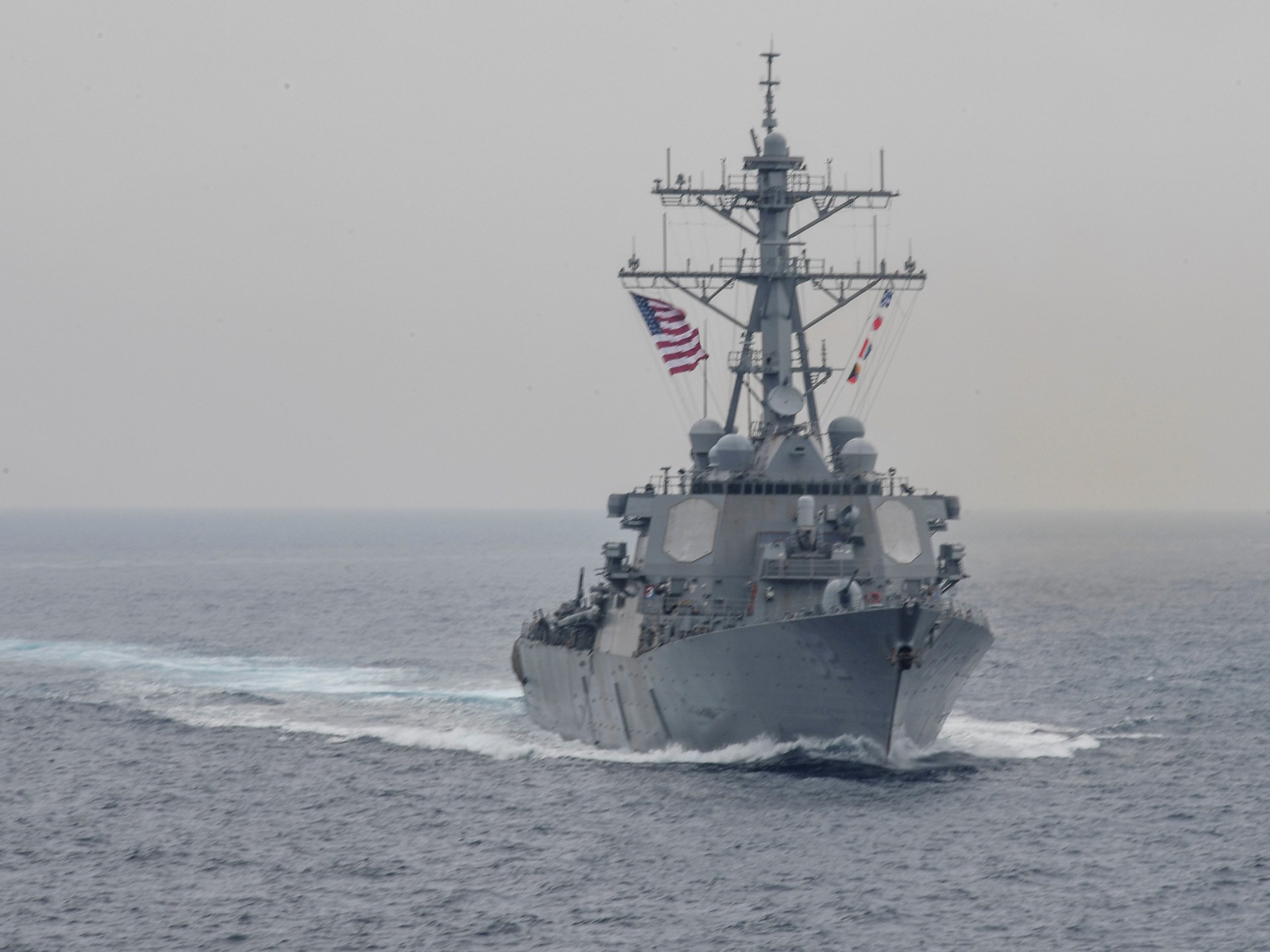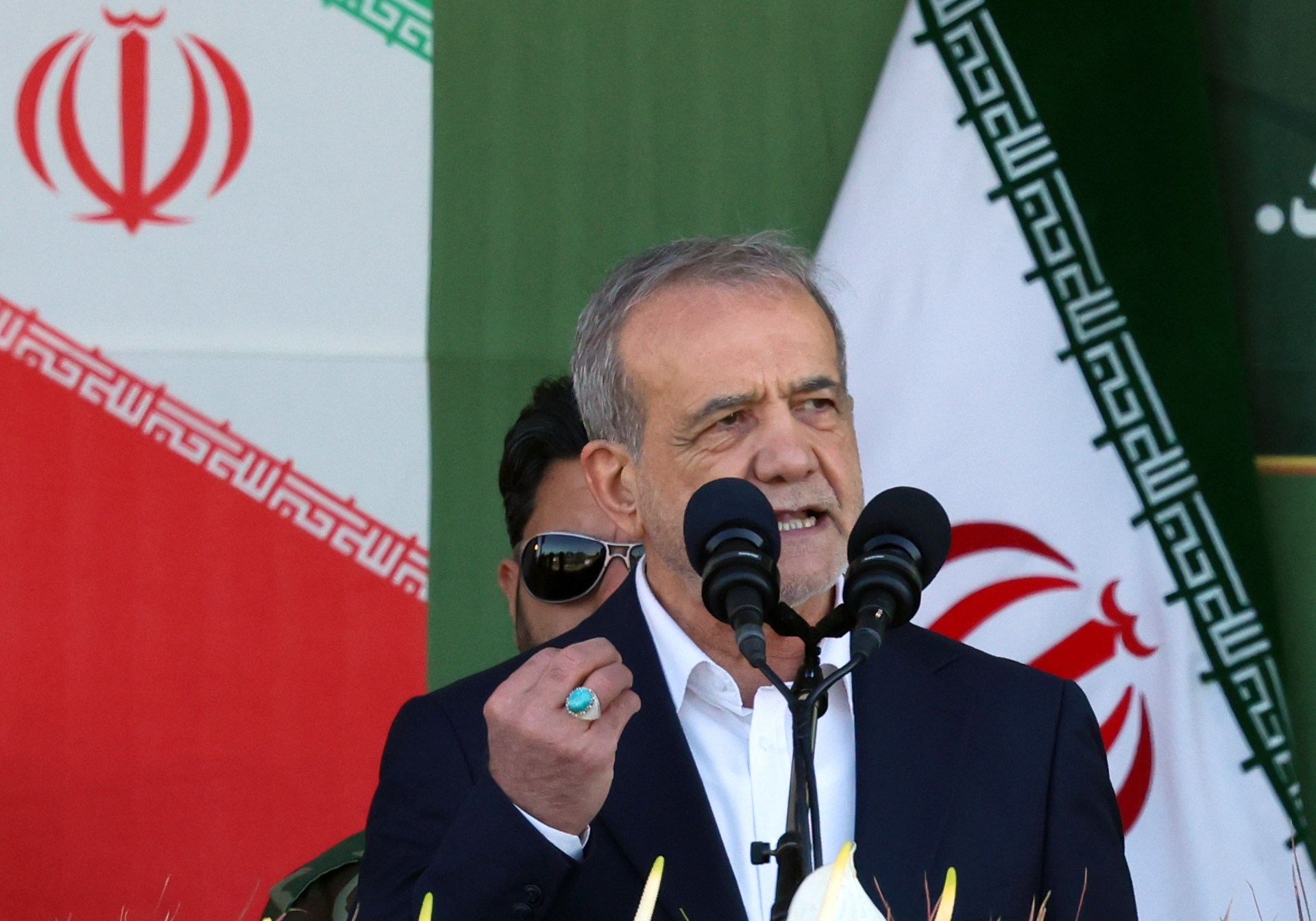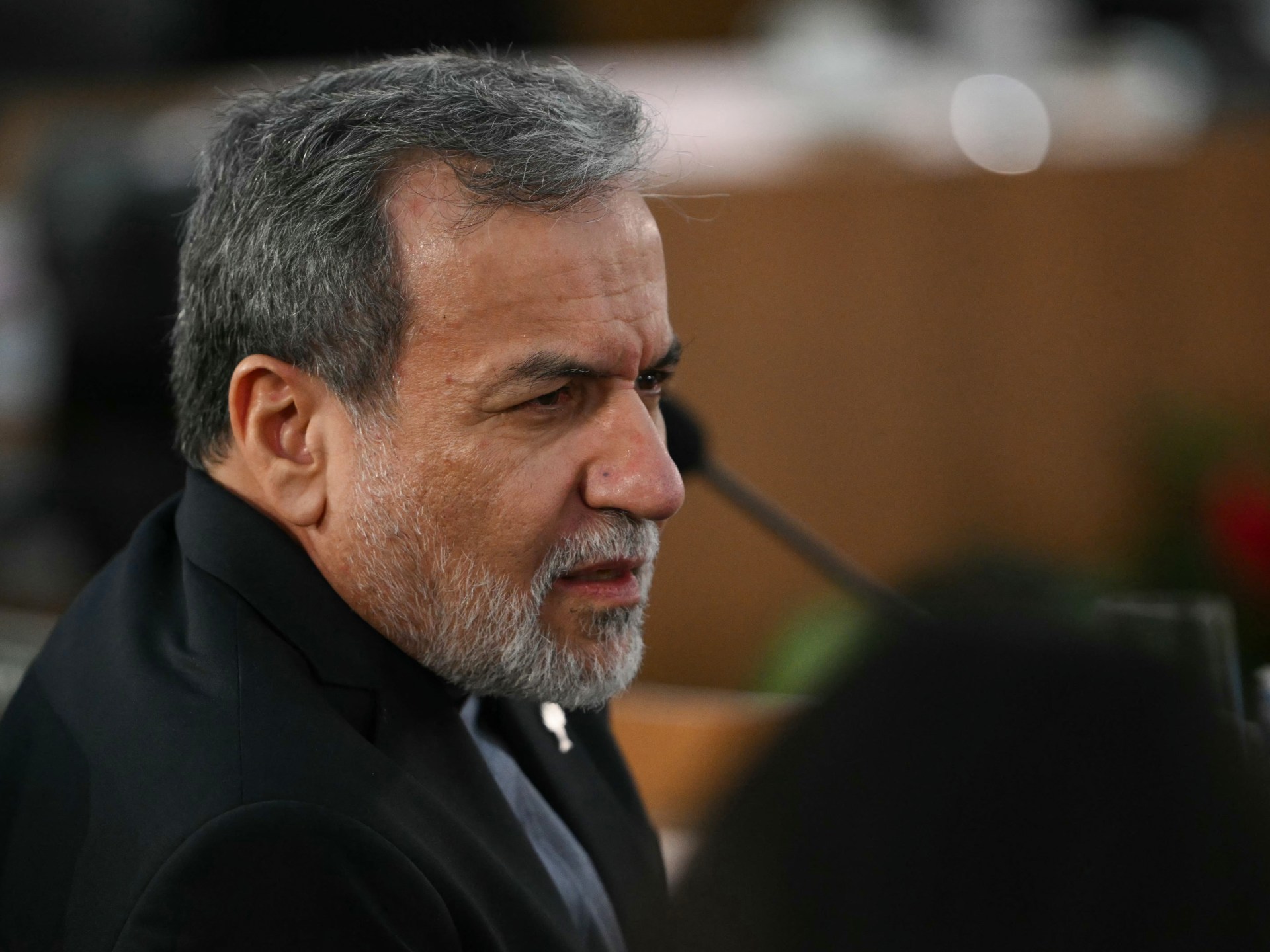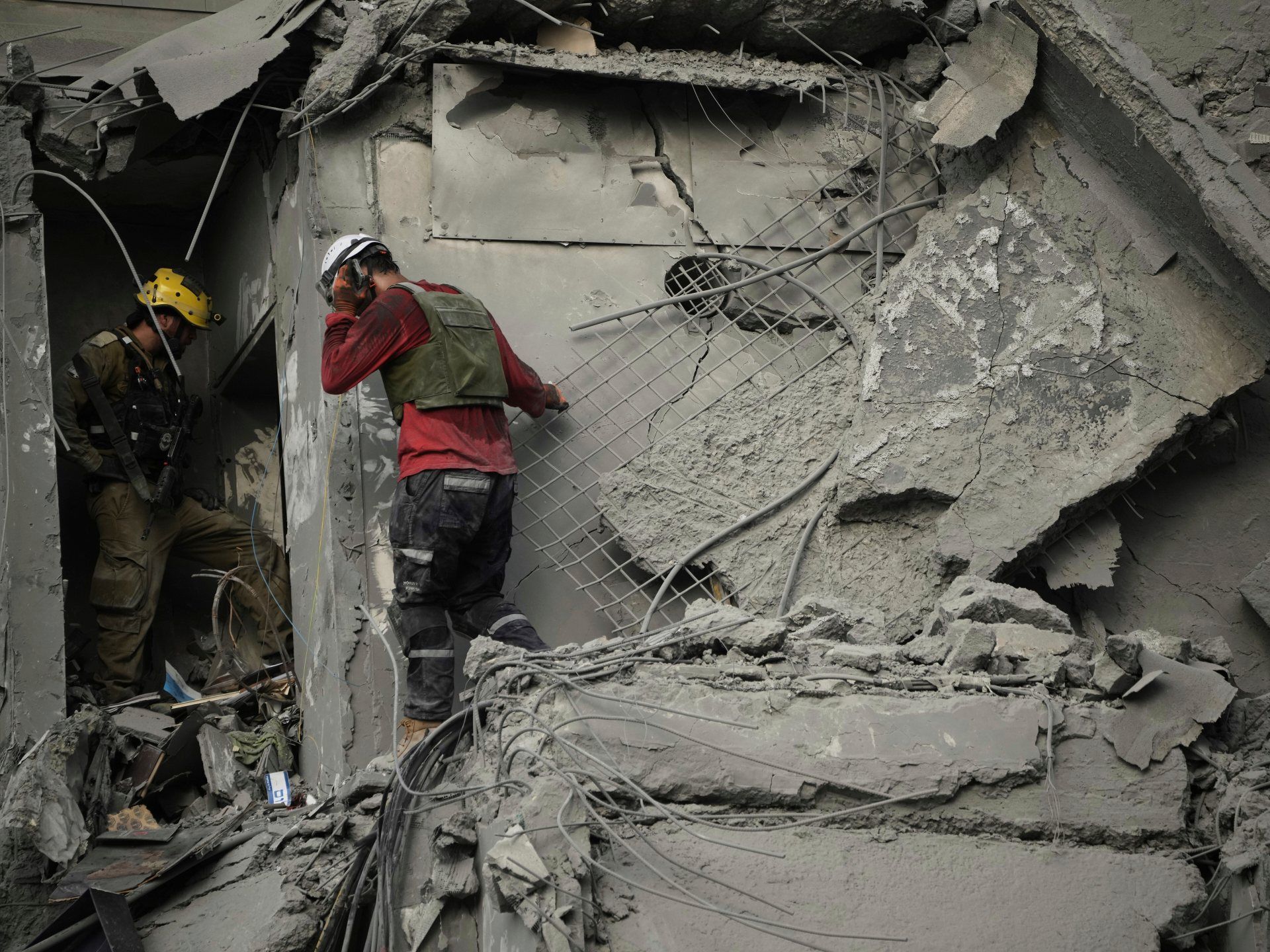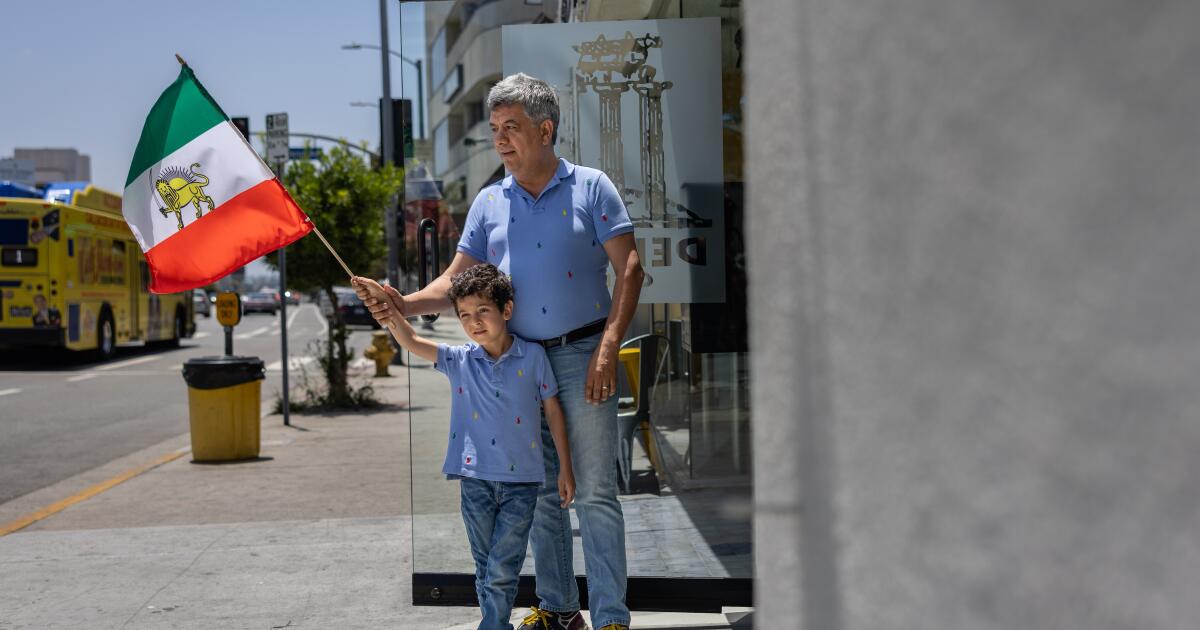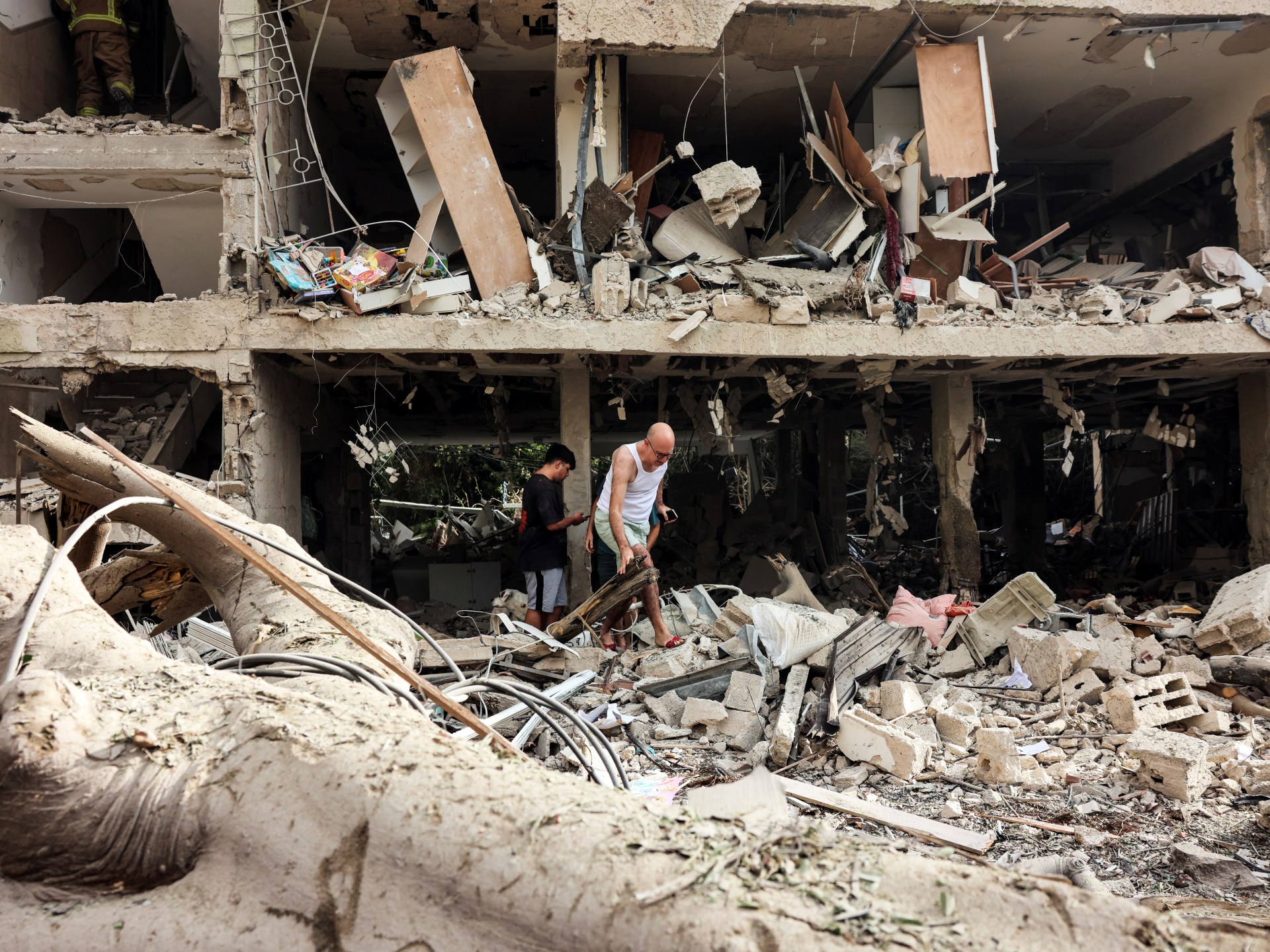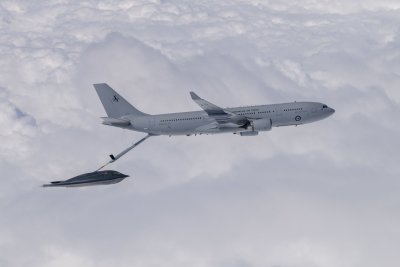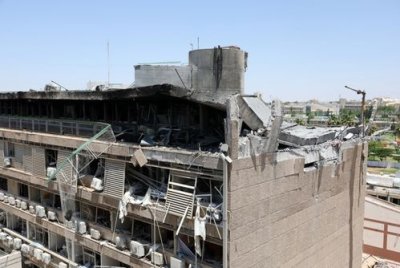1 of 2 | Soroka Hospital in Beer Sheva, in southern Israel, was struck by an Iranian drone on Friday. Photo Byabir Sultan/EPA-EFE
June 21 (UPI) — Israel’s military on Saturday killed two more top Iranian military officials during overnight strikes as fighting between the two nations entered a second week.
Iran warned it would be “very dangerous for everyone” if the U.S. intervened in the conflict. U.S. President Donald Trump said he has a maximum two-week timeline given Thursday on whether the United States will strike.
Saeed Izadi, the head of the Palestine Corps of al-Quds, which is the foreign branch of the Islamic Revolutionary Guard Corp, was killed in a strike at a home in the city of Qom in central Iran, Israel Defense Forces said. He played a key role in the financing and arming Hamas‘ attack of Israel on Oct. 7, 2023, according to IDF.
Behnam Shahriyari, another senior official, also died in a strike. He was responsible for al-Quds helping finance the Lebanese militia Hezbollah.
An Iranian nuclear scientist, Isar Tabatabai-Qamsheh, and his wife, additionally died in an Israeli strike in Tehran, the Mehr News Agency reports.
At the start of the conflict, several leaders died, including Hossein Salami, the commander of the Islamic Revolutionary Guard Corps, and Mohammad Bagheri, the chief of staff of Iran’s armed forces. Also killed were Amir Ali Hajizadeh, the head of the IRGC’s aerospace forces, and Ali Shadmani, who was recently appointed as head of the central command.
Early Saturday morning, Iran launched missiles at Israel with at least one building in central Israel catching fire from shrapnel of an intercepted Iranian missile. Later Saturday morning, a drone strike damaged a residential building in north Israel. No casualties were reported from the strikes.
Israel said it deployed 50 aircraft over Iran overnight, hitting Iran’s Fordow Fuel Enrichment Plant for the second time in Qom. Nearby, a strike on a residential building killed two people and injured four others Saturday, according to Iran’s state media.
More than 400 people have been killed in Iran since the conflict began eight days ago, Iran state broadcaster IRIB reported Saturday in citing Iran’s health ministry.
“As of this morning, the Israeli regime’s hands are stained with the blood of 400 defenseless Iranians, and it has injured 3,056 people with its missiles and drones,” the health ministry said.
“Most of the casualties and fatalities were civilians.”
Iranian strikes have killed at least 25 and injured hundreds, according to Israel. Israel has intercepted 99% of the 470 Iranian drones launched since the war began.
Diplomatic efforts
Talks between Iranian foreign minister Abbas Araghchi and European counterparts in Geneva, Switzerland, ended Friday night with no breakthrough. Britain, France, Germany and the European Union are involved in the negotiations.
“It is obvious I cannot go to the negotiations with the United States when our people are under bombardment, under the support of the United States,” Araghchi told reporters Saturday in Istanbul, Turkey.
Foreign ministers with the Organization of Islamic Cooperation met there.
Araghchi urged for the “aggression” to end “for us to come back to diplomacy.”
The meetings in Geneva were focused on a nuclear deal between the U.S. and Iran as part of a cease-fire. The European nations’ proposal includes Iran moving to zero uranium enrichment, restricting its missile program and ending Tehran’s financing of proxy groups.
Trump has wanted Iran to end all uranium enrichment, claiming they are building a nuclear bomb. Iran has said it is for peaceful purposes, including energy plants.
“Israel is doing well, in terms of war, and Iran … is doing less well,” Trump said Friday. “It’s a little bit hard to get somebody to stop.”
Trump said U.S. officials have been speaking to Iran.
French President Emmanuel Macron said Saturday he spoke on the phone with Iranian President Masoud Pezeshkian, noting that France will “accelerate” negotiations between European nations and Iran.
“Here again, my position is clear: Iran must never acquire nuclear weapons, and it is up to Iran to provide full guarantees that its intentions are peaceful,” Macron wrote in a post on X. “I am convinced that a path exists to end war and avoid even greater dangers. To achieve this, we will accelerate the negotiations led by France and its European partners with Iran.”
The International Atomic Energy Agency said in a report on May 31 that Iran had produced enriched uranium to a level of 60%, which was of “serious concern.”
The airstrikes have delayed efforts to build an operational nuclear weapon.
“According to the assessment we hear, we already delayed for at least two or three years the possibility for them to have a nuclear bomb,” Israel’s Foreign Minister Gideon Saar told German newspaper Bild in an interview published and broadcast Saturday.
Also, more than 50% of Iran’s missile launchers were destroyed, an Israeli military official said.
A senior Iranian official told CNN that they are replacing quantity with quality and the nation has been using more advanced precision missiles.
Strikes hit residential areas
Though the attacks have been focused on military and nuclear targets, tens of thousands of city residents have been displaced, particularly those in Tehran.
Esmaeil Baghaei, who is Iran’s foreign ministry spokesperson, said on Friday that three aid workers were killed, and six ambulances and four healthcare centers.
“The intentional attack on a Red Crescent ambulance in Tehran is a clear example of a war crime and a flagrant violation of international humanitarian law,” Baghaei said.
Despite the bombings, residents in Tehran told CNN they are trying to return to normal life.
“The initial shock had passed,” one resident said. “People are trying to go about their lives as best and as normally as they can.”
The resident also said: “Things are fine. Roads are getting busier back into Tehran from other areas because the government has said work begins on Sunday.”
In Israel, a two-story residential building in northern Israel was hit by a drone, the Magen David Adom said in a statement Saturday, Al Jazeera reported. No casualties were reported.
On Friday, an Iranian missile hit Israel’s northern city of Haifa, wounding at least 31 people.
